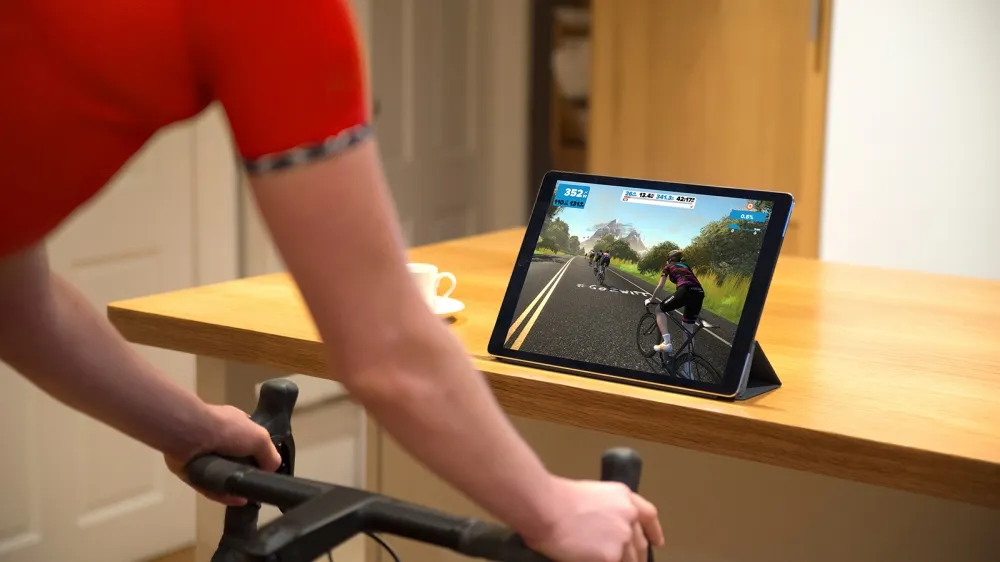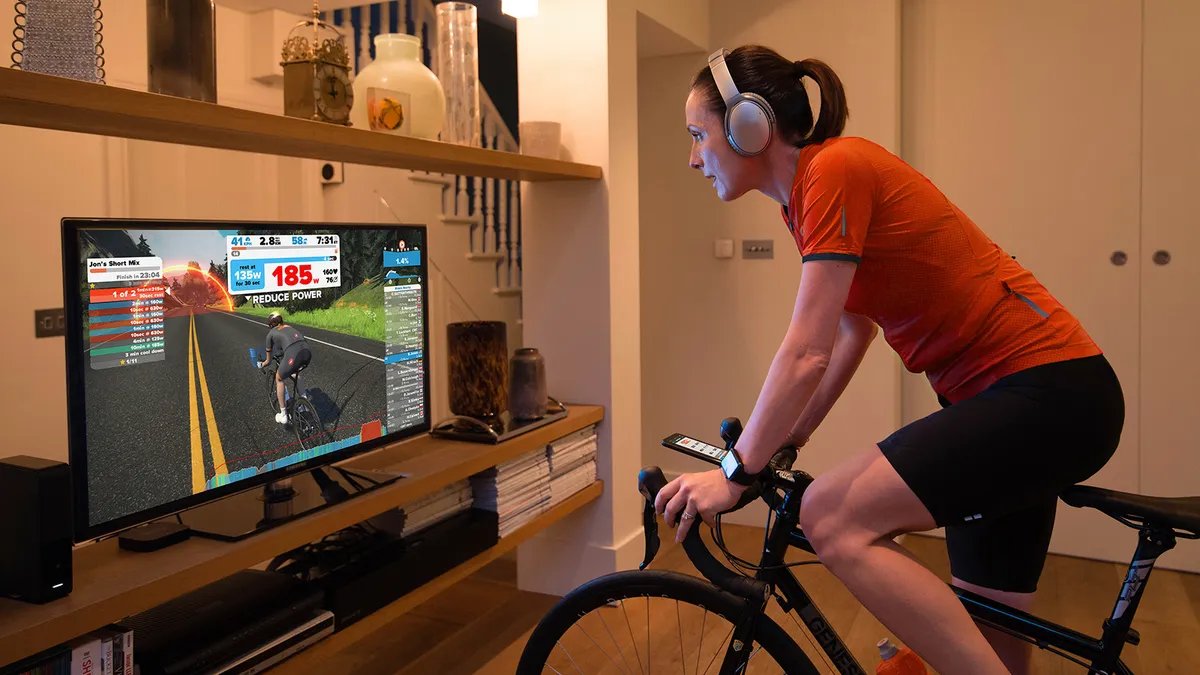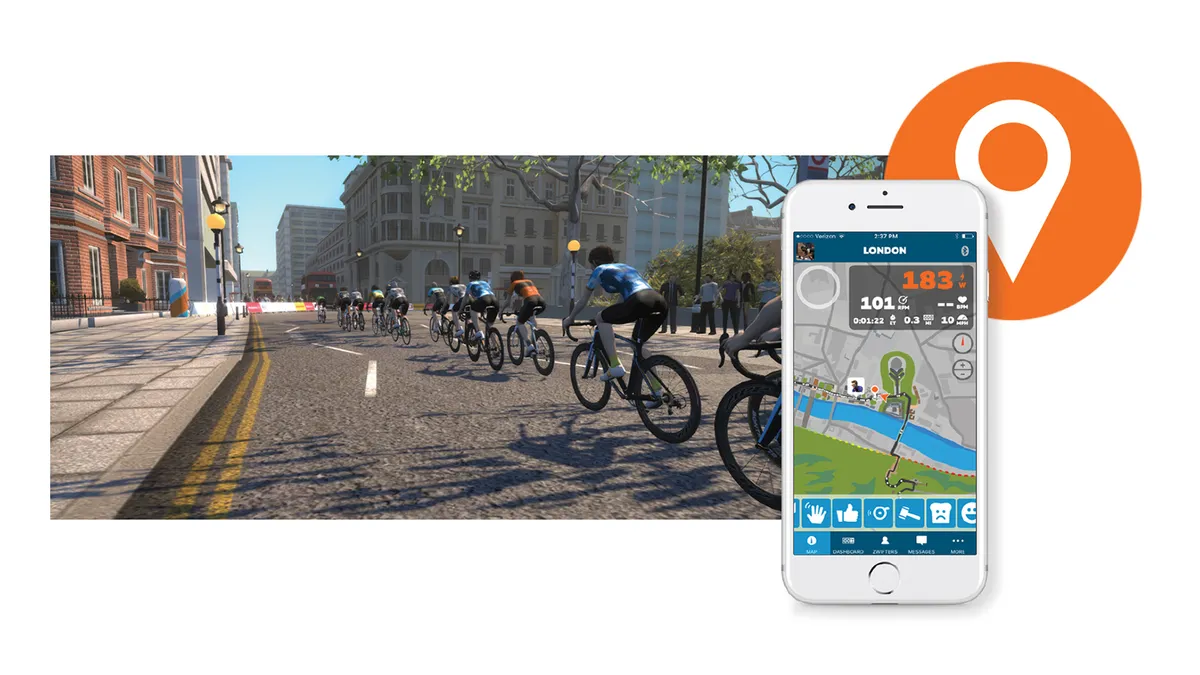This is a sponsored article in association with Zwift.
Zwift features three different and challenging worlds: the London course that hosts Prudential RideLondon in July, the Richmond route that saw Peter Sagan win the 2015 Road World Championships, and the mythical island of Watopia. And it’s Watopia where we’re heading now, identifying key features and the fitness variables you need to conquer them.
Become polka-dot royalty
As the name suggests, the Epic KOM/QOM is a devilish ascent and at 9.5km it remains the longest verified climb segment on Zwift.
Total elevation gain nestles at 414m, with an average gradient of 3.9 percent, maximum tilt of 10.7 percent and the summit bursting through the Watopia skies at 372m.
The climb hints of Alpine peaks with the base of the climb tropical before snow flanks either side of the road around 250m up. The fastest ascender becomes the wearer of the Epic king or queen of the mountain jersey, featuring blue polka dots embedded with nature’s climbing exemplar — the goat.
For the hardcore, the Epic KOM/QOM can be extended by turning left beyond the finish to a much steeper climb entitled The Pretzel, which peaks at 516m. There’s also Zwift’s traditional KOM/QOM, which is a traditional red and white polka-dot jersey, which is given to the swiftest rider up Watopia’s Hilly climb, and an orangish-red jersey for the fastest rider up the Volcano climb.
Hill climbing
How will you become a challenger for these fabled jerseys? As the likes of Zwift user and uber-climber Daniel Teklehaimanot, of Dimension Data fame, have shown, the key to climbing is your power-to-weight ratio.
This is the amount of wattage you can generate for every kilogram of bodyweight. In the interests of comparison, typical ratios are around 5.7–6.2w/kg for the pros, 3w/kg for keen recreational riders and fewer than 2w/kg for leisure riders. Broadly speaking, more than 6w/kg and up to 6.2w/kg and you’ll be a contender at the Tour de France.
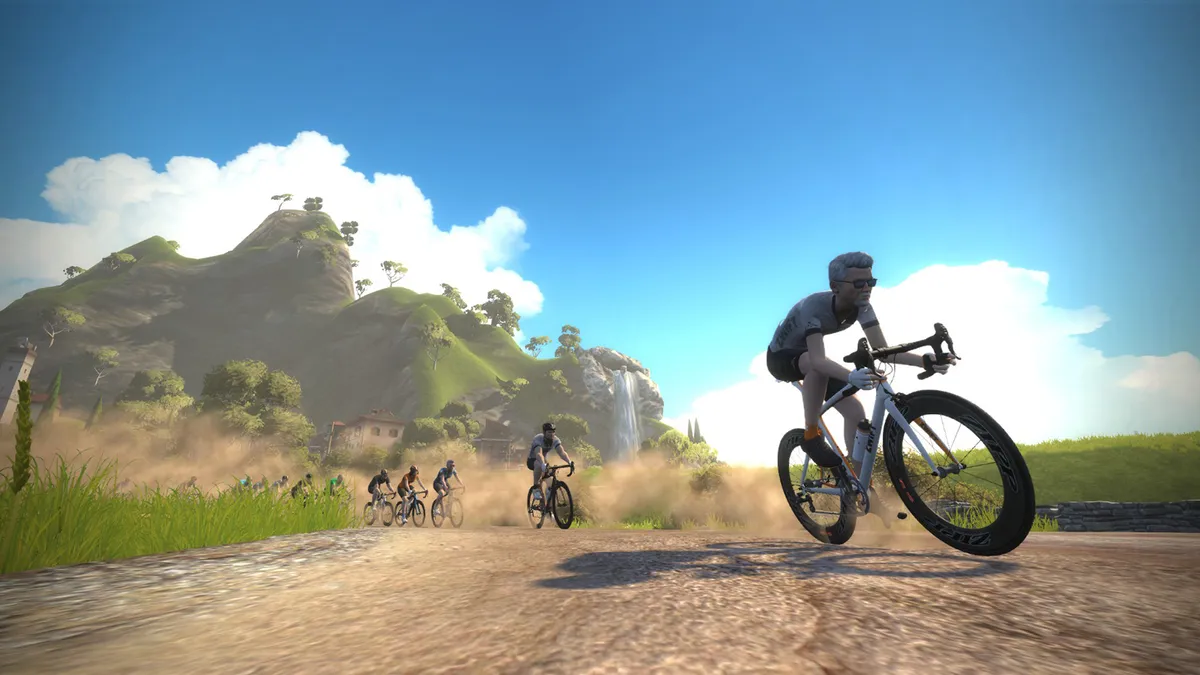
To improve your power-to-weight ratio, the key is to shed some weight while not losing power. And one of the best ways to cut pounds is a weekly fasted Zwift ride where you cycle, for example, before breakfast.
This depletes your glycogen levels (energy stores), meaning you become more reliant on burning fat to fuel your muscles. This has the dual impact of shedding calories as well as improving your efficiency at burning fat and raising your FatMax.
This was a concept of noted exercise physiologist and Ironman athlete Asker Jeukendrup, who observed that we all have an exercise intensity at which fat oxidation peaks (often around 65–70 percent of maximum heart rate).
Theoretically, sessions such as fasted Zwift efforts will raise your FatMax, meaning you can race for a longer time on the almost unlimited energy supplies from fat stores and spare limited glycogen stores for really intense efforts, such as ascending to Watopia’s Pretzel or sprinting. Which leads us neatly onto another highlight of Watopia — the sprinter’s jersey.
Sprinting for green
There are various sprint segments on Watopia where the fastest rider slips into a green jersey. Take Watopia’s new Mayan course extension, which includes many miles of fast, rolling terrain through a fantastical world of ancient Mexico.
The Mayan course offers three routes: Big Loop, a 26.6-mile course that winds through the jungle and around the volcano; Road to Ruins, an 18.7-mile route that features good, fast stretches of flat; and the 12.3-mile Jungle Circuit. All three include stretches where you need to generate peak power to win the sprints, although the Mayan extension requires commitment because only Zwift users who’ve reached level 10 or higher can gain entry.
On your Zwift dashboard your elapsed time for the sprint segment is shown by a blue box with a white stopwatch inside. These sprint jerseys are hotly contested, even the pros get in on the act, with Mark Cavendish battling others on a recent Zwift Dimension Data training camp.
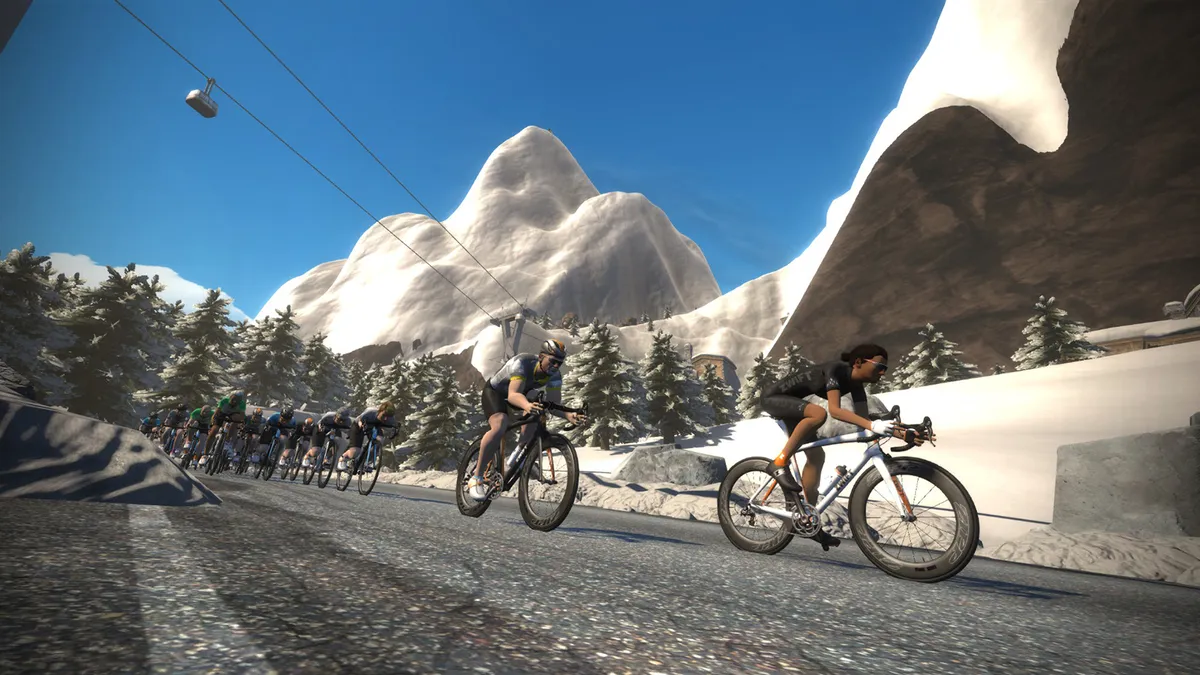
Like climbing, sprint success is heavily down to power output. But unlike climbing, it’s about absolute power rather than power-to-weight ratio.
As the name suggests, this is the maximum power you can generate for a short period of time. Sprinters such as Andre Greipel or Marcel Kittel reportedly max out at a mighty 1,900 watts when sprinting to the line, but this will be for no longer than 5–30secs.
That’s down to the sprinters’ increased muscle mass, seen clearly in Kittel’s 82kg frame, compared to climbing star Nairo Quintana’s 58kg. While this greater muscle mass can be a weighty hindrance when gravity kicks in, on the flat that doesn’t matter, so it simply acts as a speed-generator.
So how do you train on Zwift to boost absolute power?
Boost absolute power
Within Watopia there are numerous workouts you can undertake to increase your absolute power. Have a look and see what suits you. But you can also ride solo and follow your own template.
If you’re one of these solo mavericks and are looking to improve sprint power, one idea is to do some power starts. To build explosive power, you need to cycle against a heavy resistance, so on your indoor trainer, and against the backdrop of Watopia, slow down to almost a complete stop in your highest gear. Then, with your hands on the drops, and starting with your dominant foot in the one or two o’clock position, jump out of the saddle and cycle as fast as you can for 20 seconds.
Revert to gentle, lower-gear riding for the next five minutes, before doing the same high-intense power start. Complete about four to eight of these within a Zwift solo ride, monitoring your peak power output on the Zwift dashboard.
Over time you’ll see this figure rise, along with your positioning on those Watopia sprint sections.
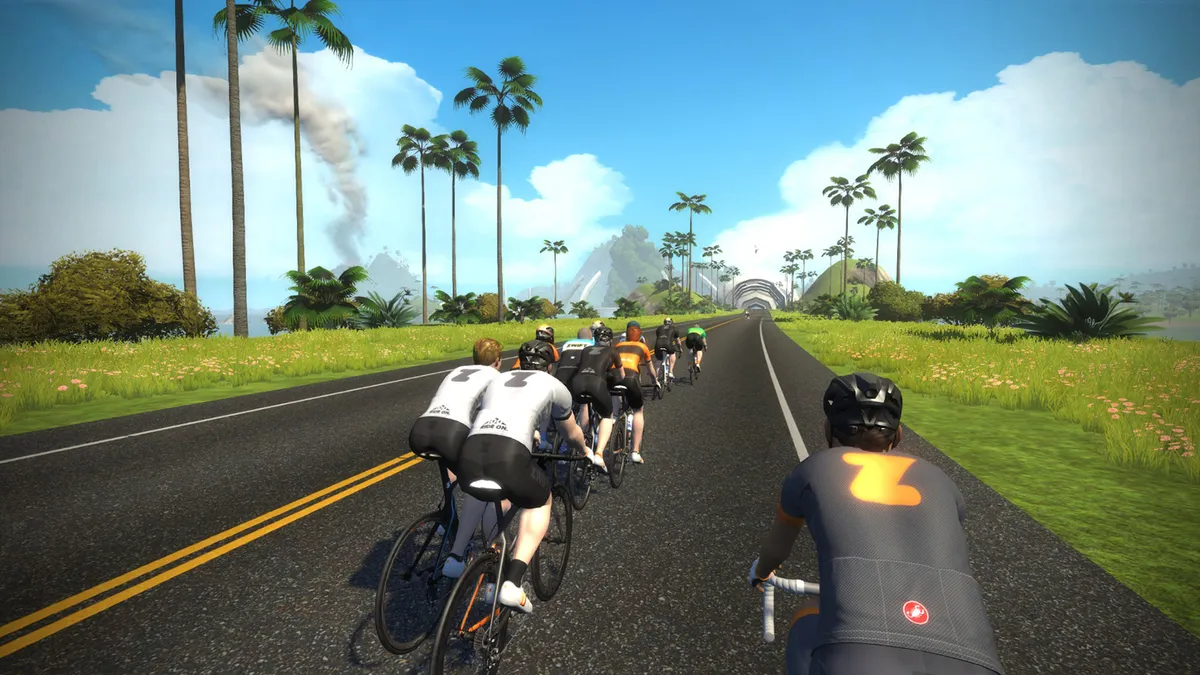
Of course, this is just a snapshot of the features and appropriate training needed to conquer the mythical cycling land of Watopia. All there’s left to do now is cope with the cobbled sections, increase muscular endurance, and refine cycling economy.
In no time, you’ll be in contention to catch Ollie Jones, the 21-year-old New Zealander who recently earned a professional contract with Dimension Data’s development team after his performances on Zwift.
Even if you rub shoulder to shoulder with Jones, you’ll still have to reel in Tanja Erath, another Zwift regular whose online-training performances caught the attention of Canyon-SRAM’s women’s team. Erath’s pedalling power has been rewarded with a professional contract. Chapeau to Jones, Erath and all Watopians!


